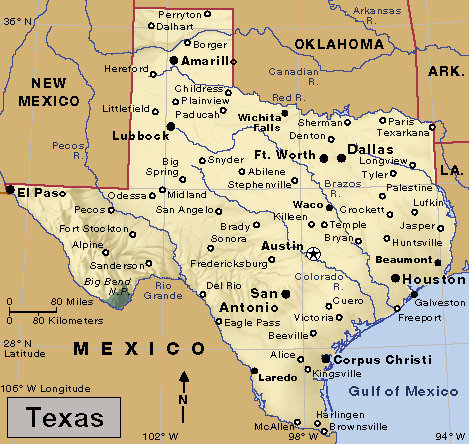Amarillo << `am` uh RIHL oh >> (pop. 200,393; met. area pop. 268,691) is the largest city and commercial center of the Panhandle of northern Texas. It serves as a major distribution and processing center for cattle, oil, and other products.

Cattle auctions held by the privately owned Amarillo Livestock Auction rank among the largest in the state. Several large beef-processing plants operate in Amarillo. Large deposits of oil and natural gas lie in the Panhandle, and Amarillo has many petrochemical plants. The city is located within one of the world’s chief helium-producing areas. An assembly and disassembly plant for United States nuclear weapons is located northeast of the city. Other industries produce aviation equipment, copper, and fiberglass.

Amarillo’s cultural attractions include an art museum, a community theater, and a symphony orchestra. Downtown Amarillo has a Civic Center with convention and entertainment facilities. The Amarillo area is home to West Texas A&M University and a branch of the Texas Tech University medical school. The American Quarter Horse Association, the world’s largest horse registry, has headquarters in Amarillo. Palo Duro Canyon, a major tourist attraction, is just southeast of the city.
In 1887, construction crews of the Fort Worth and Denver City Railway founded the settlement of Ragtown near what is now Amarillo. In the same year, a land developer laid out the site of Amarillo near the settlement. Settlers called the town Amarillo, which means yellow in Spanish. The name may refer to the yellowish soil that borders nearby Amarillo Creek.
Amarillo grew rapidly during the early 1900’s, when other railroads began to serve the community and oil and natural gas were discovered in the area. Today, manufacturing and such service industries as education, government, and health care support Amarillo’s economy. The city has a commission-manager form of government and is the county seat of Potter County.
